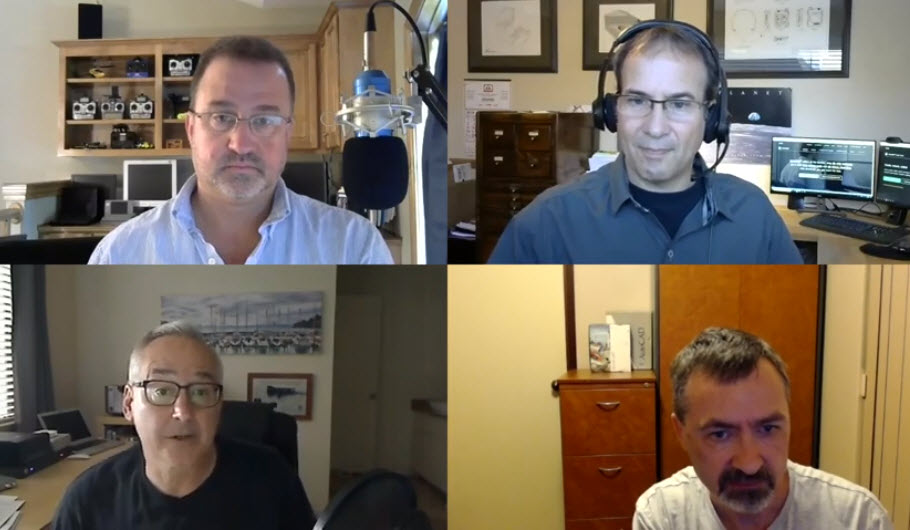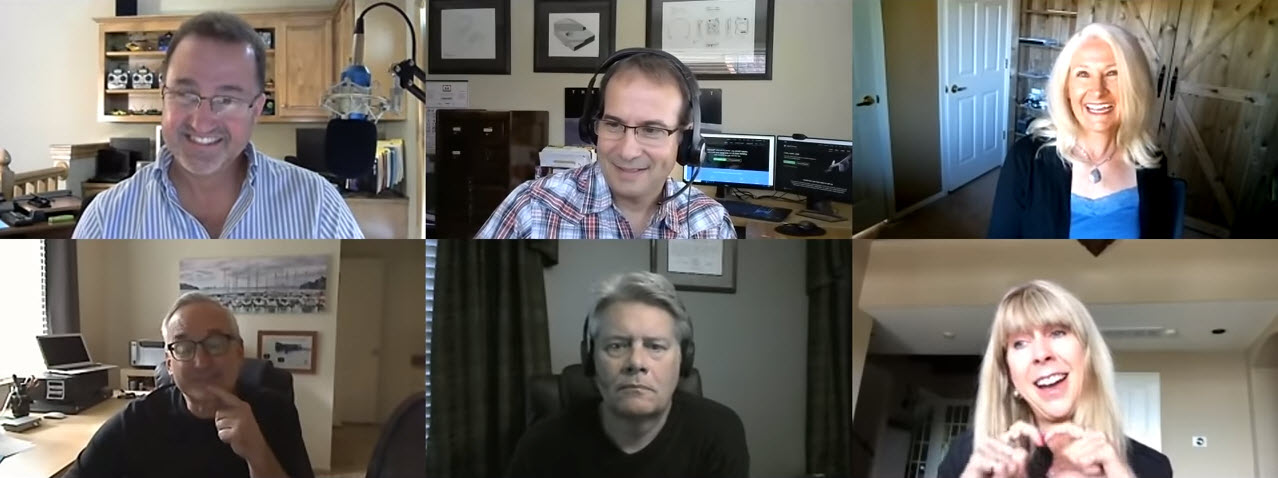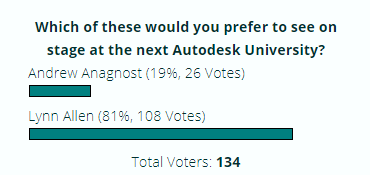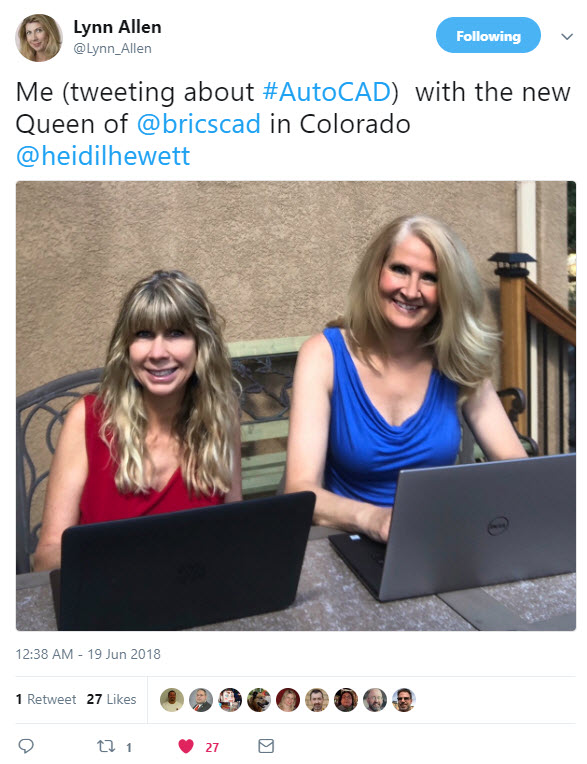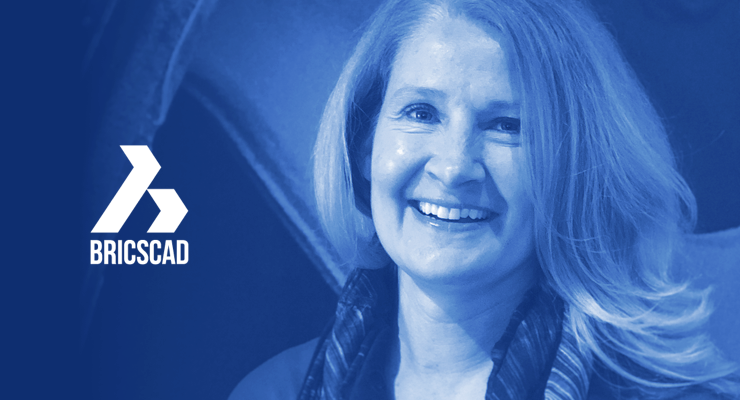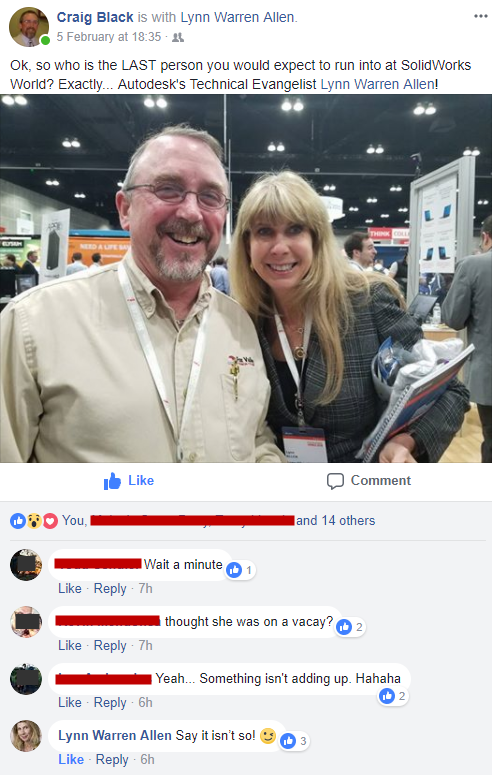Welcome to the second in this series of interviews of Interesting People of CAD (IPoC).

David Kingsley has had a long and interesting career, was present in the early days of CAD adoption, and served as an AUGI board member for years. Here is the third and final part of David’s interview. This was the most interesting part of the interview for me, but unfortunately much of the more hilarious anecdotes and other discussions were off the record so I can’t share them. I hope you enjoy what’s left!
Steve: What are you most proud of achieving with AUGI?
David: I have to say AUGIWorld magazine and the website. That’s where the group really took off and looked professional.
Steve: If you could go back in time, what would you do differently with the benefit of hindsight?
David: As you get older you learn a few things. I’d probably be a bit more diplomatic about the changes that they went through, and try to resolve things in another way. I don’t know that it would have done much good. I got pretty arrogant about their turnover. I tried to stick to the facts without getting personal; I would always try to do that. I would try to convey factual information but I went a little over the edge with the campaign against what they were trying to do.
I really have no regrets about anything to do with getting the magazine and website started, and how we set up that agreement with SolidVapor. I think that really put a professional face on AUGI at that point.
Steve: What value do you think Autodesk has received from AUGI? Is it a marketing tool…?
David: Yes and no. Having worked directly with the engineering people, I felt they genuinely wanted to know what the users wanted, at least at that point in time. They used us as a filter, so to speak. We were out there gathering information and we were supposed to put it into a filtered and cohesive form for them to use. That’s what I remember as the mission of the group, which is to be the mouthpiece of the user community to Autodesk.
[Some discussion on Robert Green’s AUGI involvement]
I message with Robert often on Facebook and he’s been to visit my house.
Steve: I finally got to meet Robert after all these years, about six months ago in Paris when we both got invited to the Bricsys Conference. It means I’ve finally got to meet some people I haven’t managed to meet on my travels in the past.
[Some discussion about user group names]
David: The original name of the group was NAAUG (North American AutoCAD User Group) and we switched over to AUGI when we went international. Looking for the new name, we came up with a number of variations and one of them I remember was DAUGP (pronounced Dog Pee)!
Steve: [Spits coffee] That’s a good one!
David: I didn’t think that was a good one.
[Some discussion of user groups in general, Bricsys and BricsCAD]
David: I always like to stay on top of these things, you know? I read Ralph Grabowski’s newsletter all the time and he’s been talking about it [BricsCAD] a lot lately.
[Some discussion of the then-forthcoming bundling of AutoCAD and most verticals and Autodesk’s move to subscription only]
David: I know they’re trying to emulate Adobe’s subscription model. It’s going to be painful for a while but I think they’ll eventually get there. It’s just got to be affordable. But you know, people scream about the price and when I looked into it the cost was about $1.00 to $1.50 an hour based on 2000 hours a year. If you can’t afford $1.50 or $2.00 an hour overhead, you’re in the wrong business!
Steve: Yeah, but every business likes to reduce its overheads and doesn’t like to pay extra overheads. Autodesk is doing what it can to reduce its costs; it’s just sliced its workforce by about 23% in two stages. Nobody likes paying more money than they have to.
[More discussion about perpetual licenses, subscription, maintenance and ADN]
Steve: Do you have any fun stories to tell about your AUGI days?
David: I remember checking in to the MGM Grand for AU and being there for nine days, never even leaving the hotel. We would go in and start setting up AU and we would man the booth and teach classes and then break it down and do a debriefing. I remember one time all of us in a conference room and we all just fell asleep. We folded our arms on the desk, put our heads down, a couple of people got tired and a couple of people kept talking, a couple of people dozed off and sooner or later it was everybody. We were all just flat exhausted. We all woke up and said, “What are we doing here?”
I lived in Denver for many years, a ten hour drive to Las Vegas. It was worth taking the car for a nine-day stay. I think I did that 5 or 6 years running. I remember a few of us had to find a laundromat midweek, and I was the only one with a car. One year I arrived at the MGM about seven one night after this long drive, and it was just jammed to the hilt. I couldn’t even get off the street. I had a lot of stuff and decided to get a valet, because Autodesk would expense stuff like that for us, but I couldn’t get one. It took me an hour to check in. Turned out the Rolling Stones were playing the MGM Grand that night! I was there about two hours before show time.
On the way to my room there were people walking around the arena trying to sell tickets for $350 a seat! I like the Stones but I wasn’t ready to pay that and I’m sure my wife wouldn’t have been happy either.
Another time, I went to a hospitality party with the executives. The suite there had all this dark wood and it looked like a cabin in the Rocky Mountains somewhere, up on the 15th floor of the MGM Grand. All sorts of hors d’oeuvre and wine, I’m sure they paid a bundle for that!
Steve: Yeah, the parties were always fun.
I have a falling asleep story too. I was at AU 2006. I was with Owen Wengerd and we were hanging out at a bar until 1 AM and we were just about to head off to bed when we saw Tony Peach walk past. He was a great guy, passed on a few years ago, but Owen and I both knew him from earlier times. We ended up at a bar talking and it was about 4 AM before we called it a night. The next morning I had a class, I was hoping to learn .NET programming for AutoCAD. I got there and sat down and my eyes glazed over and it was the old dropping off and neck-jerking wake-up thing. That’s the reason I never became a .NET programmer in AutoCAD! I just slept through the class. It was too hard. I gave up.
[We swap a bunch of really funny off-the-record stories – I wish I could share them!]
David: [About Lynn Allen] How can you axe a person like that? She’s kind of the face of the corporation.
Steve: Yup. I don’t understand it. Maybe it’s personal.
David: Yeah. Also there was this thing about age discrimination. A lot of the older folks are wondering whether this had something to do with age. Who knows? Inevitably as you’ve been there a long time your salary climbs and you get expensive after a while, but they probably generate a lot more revenue than they cost.
Steve: I’m sure Lynn generated a lot more revenue than she cost.
David: Yeah. I can imagine next year when some guy in a suit shows up, they’re not going to be happy!
Steve: Well, she’s a drawcard, that’s for sure. And I guess she’s likely to be somebody else’s drawcard soon.
David: That’s true. I understand she’s got offers or at least approaches from all the competitors. Solidworks in particular.
Steve: I wonder if she comes as a package with Heidi Hewett? I understand Heidi wrote a lot of the material.
[Note: this interview took place before Heidi’s move to Bricsys]
David: Yeah, That would be a real coup. Hiedi was her cohort there. I remember watching Heidi teach a class and the software was acting up. I blurted out that a number of mathematicians throughout history have had numbers associated with them like Avagadro, Reynolds and so on. I want to create a Kingsley Factor, as follows: “The efficiency of a piece of software is inversely proportional to the number of eyes looking at the screen.” It always screws up when 50 people are looking at it.
Steve: The curve will show a dip at two people observing, based on my experience in support. I would get a call out about a certain problem and the two words that were guaranteed to fix it were “Show me.”
David: Heidi and her husband Nate lived close to us. We would catch up with them at the local pub from time to time.
Steve: I remember Nate got the shaft [from Autodesk] in about 2009 in an earlier “culling of the unwanted”.
David: Earlier than that, there was another big reduction-in-force and we were there [at Autodesk] and we knew it was going to happen.
Immediately after our board meeting, we left San Rafael and relocated in San Francisco for AU. As I recall that was the year of four AUs. One young Autodesk employee was with us and said, “Well, I got laid off. But! I have a job to finish off through Autodesk University and they didn’t take away my American Express card. So we’re gonna party this week!”
IPoC interview – David Kingsley – part 1
IPoC interview – David Kingsley – part 2
